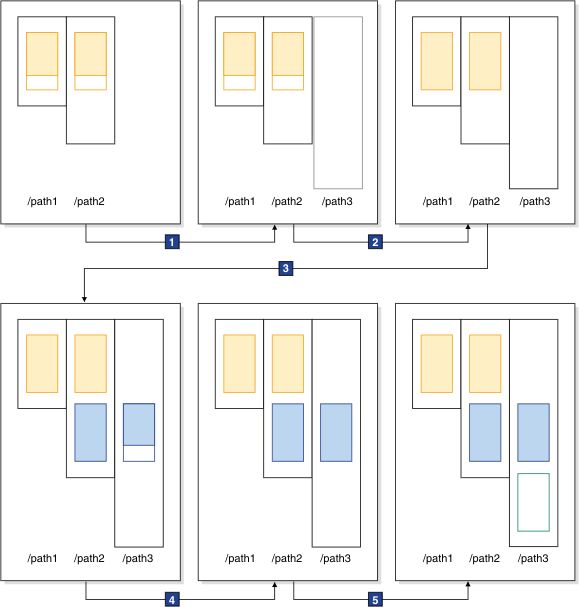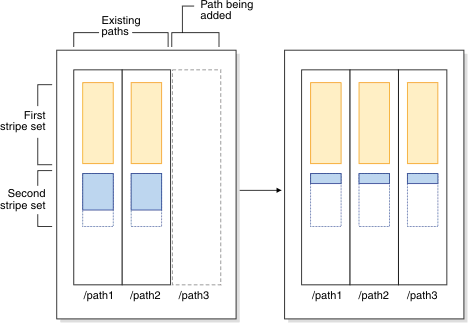If you are using automatic storage table spaces,
the database manager creates and extends containers as needed. If
you add storage to the database, new containers are created automatically.
How the new storage space gets used, however, depends on whether you
REBALANCE the table space or not.
When an automatic storage table space is created,
the database manager creates a container on each of the storage paths
of the automatic storage database (where space permits). Once all
of the space in a table space is consumed, the database manager automatically
grows the size of the table space by extending existing containers
or by adding a new stripe set of containers.
Storage for automatic table spaces is managed
at the database level; that is, you add storage to the
database,
rather than to table spaces as you do with DMS table spaces. When
you add storage to a
database, the automatic
storage feature will create new containers as needed to accommodate
data. However, table spaces that already exist will not start consuming
storage on the new paths immediately. When a table space needs to
grow, the database manager will first attempt to extend those containers
in the last
range of the table space. A range is all
the containers across a given stripe set. If this is successful, applications
will start using that new space. However, if the attempt to extend
the containers fails, as might happen when one or more of the file
systems are full, for example, the database manager will attempt to
create a new stripe set of containers. Only at this point does the
database manager consider using the newly added storage paths for
the table space.
Figure 1 illustrates
this process.
Figure 1. How
automatic storage adds containers as needed
In the preceding diagram:
- The table space starts out with two containers that have not yet
reached their maximum capacity. A new storage path is added to the
database using the ALTER DATABASE statement with the ADD STORAGE clause.
However, the new storage path is not yet being used.
- The two original containers reach their maximum capacity.
- A new stripe set of containers is added, and they start to fill
up with data.
- The containers in the new stripe set reaching their maximum capacity.
- A new stripe set is added because there is no room for the containers
to grow.
If you want to have the automatic storage table
space start using the newly added storage path immediately, you can
perform a rebalance, using the REBALANCE clause of the ALTER TABLESPACE
command. If you rebalance your table space, the data will be reallocated
across the containers and stripe sets in the newly-added storage.
This is illustrated in
Figure 2.
Figure 2. Results of adding new storage
and rebalancing the table space
In this example, rather than a new stripe set being created,
the rebalance expands the existing stripe sets into the new storage
path, creating containers as needed, and then reallocates the data
across all of the containers.

